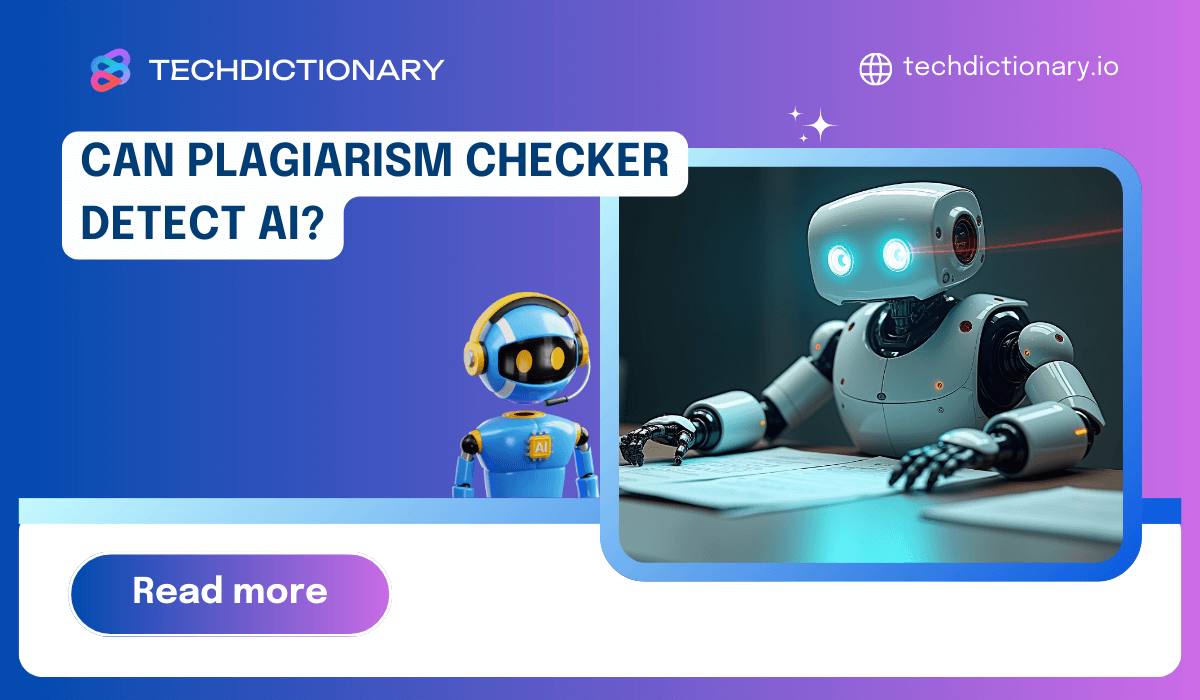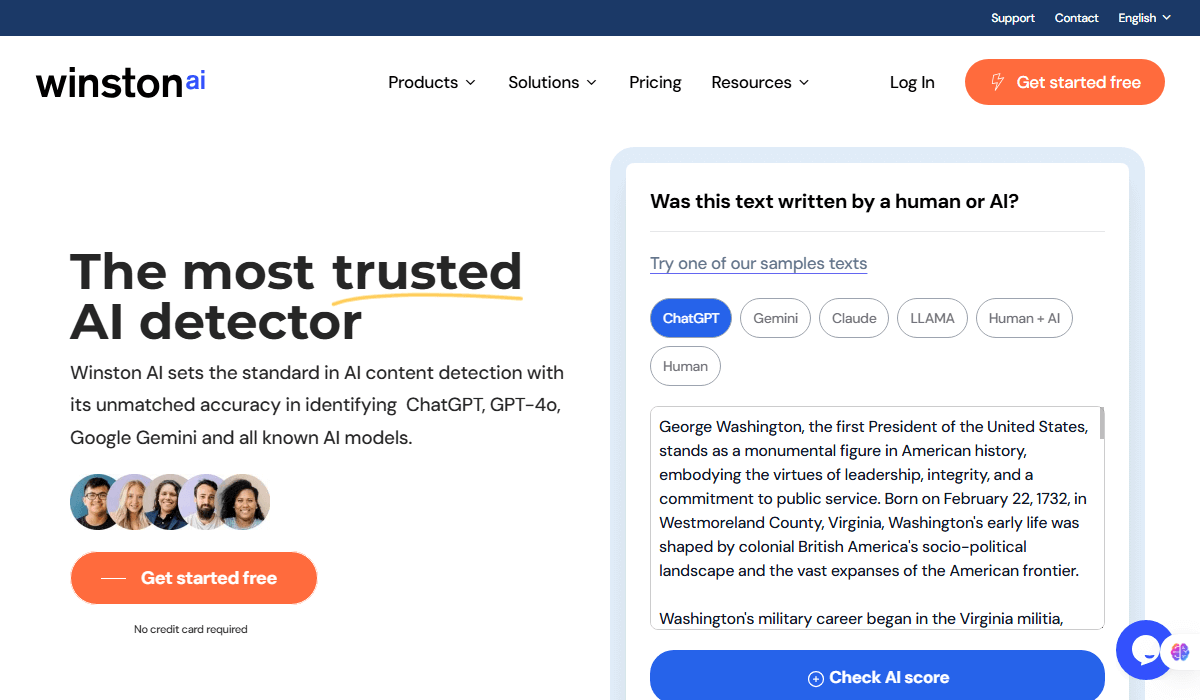
Ever wondered if plagiarism checkers can spot AI-written content? Or maybe you’re worried that using AI tools might unfairly flag your work? You’re not alone. With AI writing becoming so common, figuring out what’s original and what’s not is getting trickier by the day.
So, can plagiarism checker detect AI? Let’s break it down. In this guide, we’ll walk you through what these tools can do (and what they can’t), plus which ones actually help keep your content fresh and credible. Let’s dive in!
So, traditional plagiarism checkers? They’re like the text detectives. They go through massive databases of academic papers, websites, and published content, looking for any direct matches or even paraphrased content. Tools like Originality AI or Winston AI use algorithms to catch copy-pasting, whether it’s an exact match or a sneaky synonym swap.
But here’s the thing: these checkers don’t really care how the content was created. So, AI-generated content often flies under the radar. Even if it’s original and doesn’t copy from any sources, it won’t get flagged. In short, these tools are only looking for duplication, not who wrote it.
Now, let’s talk about AI detectors. These tools are all about figuring out if a human or an AI wrote the content. They use fancy machine learning models that have been trained on millions of text samples to look at patterns in writing.
They pay attention to things like:
AI-generated text tends to be pretty predictable, whereas human writing has more of that wild, creative swing. Unlike plagiarism checkers, AI detectors aren’t comparing your text to other sources, they’re looking at how it’s written to figure out who created it.
But here’s the catch: no AI detector is perfect. As AI keeps getting smarter, these tools may need a little help from human eyes to make sure their results are spot on.
Nope, they can’t. Traditional plagiarism checkers just aren’t built to catch AI content. They look for exact matches or paraphrasing, but AI-generated content tends to be completely original (even if it’s based on ideas from elsewhere). So, it won’t flag anything because it’s not copying anyone directly.
These tools miss some of the sneaky patterns in AI writing, like its smooth, consistent structure or predictability. That’s why AI detectors are a must—they look at writing style, not just text duplication.
So, What Can Handle Both?
Here’s where things get interesting. As we head into 2025, there are tools coming out that can catch both plagiarism and AI content. Let’s check out the top 3 options that experts, educators, and content creators are loving right now.
Originality AI is a solid bet for anyone who needs accurate content verification. It’s super reliable, detecting AI content with up to 99% accuracy, even on advanced models like GPT-4o-mini and LLaMA 3.1. Plus, it keeps false positives under 3%, which is pretty impressive.

Originality AI Tool Overview
Here’s what it brings to the table:
With all these features, Originality AI is the real deal for anyone serious about content authenticity.
Pros & Cons:
| ✅ Pros | ❌ Cons |
| ✅ Simple and user-friendly interface
✅ Flexible pricing: subscriptions or one-time credits ✅ Accurately detects AI-generated content ✅ Identifies plagiarized content from online sources ✅ Supports fact-checking to validate information sources ✅ Provides readability scoring for content clarity |
❌ May misclassify human-written content as AI
❌ No fully free version to test all features |
If you’re dealing with content in 2025, you’ve got to be one step ahead of AI. That’s where Winston AI comes in. Think of it as your go-to digital detective, built to spot AI-generated text (even from ChatGPT, GPT-4, or Gemini) with 99.98% accuracy. Not just that, it also checks your work against billions (yep, billions) of online sources to make sure everything’s original and squeaky clean.
What’s cool? It’s super easy to use, supports multiple languages, and works like a charm for teachers, editors, publishers—you name it. If you care about authentic content, Winston’s got your back.

Winston AI Tool Overview
Key Features:
Pros & Cons:
| Pros | Cons |
| ✅ High AI detection accuracy (up to 99.98%) on models like ChatGPT, GPT-4, and Gemini
✅ Combines AI detection and plagiarism scanning in one unified platform ✅ Scans against 400+ billion online sources for plagiarism detection ✅ Supports file uploads (DOC, TXT, etc.) for efficient large-volume analysis ✅ Clean, intuitive interface—ideal for educators, editors, and non-tech users |
❌ Plagiarism check is only available in higher-tier (Advanced) plans
❌ Some features (e.g. handwriting detection, interactive map) may be inconsistent |
Winston AI makes sure your content is real, original, and totally legit. And hey, with a free trial and no tech headaches, why not give it a shot?
Let’s dive into ZeroGPT. It’s an AI content detection tool that’s here to spot text generated by models like ChatGPT, GPT-4, and Google Bard. Trained on over 10 million texts using something called DeepAnalyse™ tech, it boasts an impressive accuracy rate of over 98%. Oh, and it also has a plagiarism checker that scans billions of sources to make sure your content is original. Pretty cool, right? Plus, it supports multiple languages and has a user-friendly interface, so it’s perfect for educators, writers, and anyone who needs to keep their content legit.

ZeroGPT Tool Overview
Key Features:
Pros & Cons:
| Pros | Cons |
| ✅ Detects AI text with DeepAnalyse™, up to 98% accuracy
✅ Built-in plagiarism checker scans billions of sources ✅ Supports multiple languages ✅ Free version and low cost per word |
❌ May wrongly flag human-written content
❌ No clear info on how detection works ❌ Can’t export or share detection reports ❌ May miss context or subtle writing differences |
So, can plagiarism checker detect AI? Short answer: not really. Traditional tools are great at spotting copied text, but they don’t do so well with original AI content. That’s why combining plagiarism detection with AI-specific analysis is a game-changer.
In this guide, we’ve looked at the best tools that do both:
If you’re serious about keeping your content authentic, don’t just stick to the old-school methods. Check out these modern tools to stay on top of AI-written content!
Not really. Traditional plagiarism checkers are all about comparing content to existing sources. If the AI text hasn’t been published anywhere before, it’s likely to slip right under the radar.
Yep, but with some caveats. Turnitin has an AI detection feature, but it’s not perfect. Even if they admit that their results can sometimes be off, a human review still needs to be double-checked.
Yes, you can. If your AI content is too similar to existing material or if it paraphrases without giving credit, plagiarism tools might flag it. So always be sure to cite your sources!
Winston AI is a solid option if you’re looking for a free trial. You get 14 days and up to 2,000 words scanned for free, which is perfect for testing out both AI and plagiarism detection in one tool. It’s a great way to dip your toes in without spending anything!

